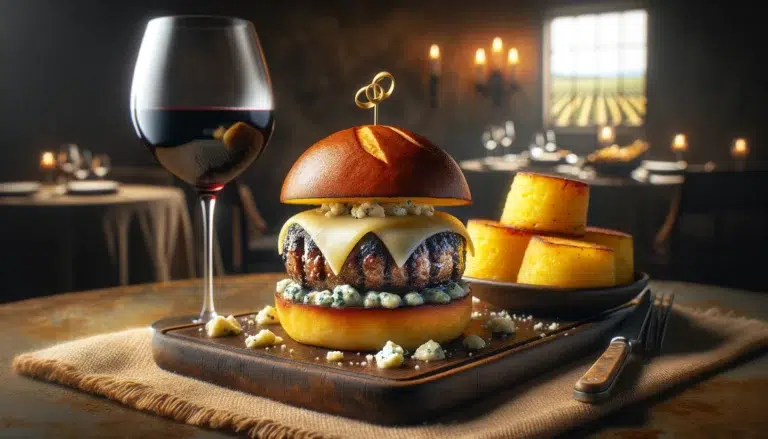How to Create a Balanced Wine and Cheese Pairing
— Aussie contributed to this post; you can read more about her on the About page.–
Want to pair wine and cheese like a connoisseur? This guide effortlessly shows you how to create the most perfectly balanced wine and artisan cheese pairing. You’ll find straightforward tips that elevate any cheeseboard and pairing strategies that work for any occasion. Start your journey to confident, artisan cheese and wine pairings today.
Key Takeaways
Tannins
 Tannins in Wine Tannins in wine are phen... More, acidity, and wine body should complement cheese richness, creaminess, and saltiness for balanced pairings; for instance, bold red wines go well with intense cheeses.
Tannins in Wine Tannins in wine are phen... More, acidity, and wine body should complement cheese richness, creaminess, and saltiness for balanced pairings; for instance, bold red wines go well with intense cheeses.Match the intensity of your wine and cheese (e.g., a strong Cabernet with aged cheddar); play with textures and consider regional pairings (e.g., white Bordeaux
 What exactly is a Bordeaux? Bordeaux ble... More with local goat cheese).
What exactly is a Bordeaux? Bordeaux ble... More with local goat cheese).Explore classic combos like Sauvignon Blanc with goat cheese, and don’t shy away from adventurous pairings like Riesling with blue cheese or Rosé with spicy cheeses.
The Science Behind Wine and Cheese Pairings

Venturing into the world of wine and cheese is like stepping into a dance where each partner complements and enhances the other. It’s a delicate balance of flavors and mouthfeel, where the interplay of tannins Tannins in Wine Tannins in wine are phen... More, acidity, and the body of the wine meets the richness, creaminess, and saltiness of the cheese. The right combination can transform a simple snack into a symphony of taste, ensuring neither the wine nor the cheese overpowers; rather, they elevate each other to new heights.
Tannins in Wine Tannins in wine are phen... More, acidity, and the body of the wine meets the richness, creaminess, and saltiness of the cheese. The right combination can transform a simple snack into a symphony of taste, ensuring neither the wine nor the cheese overpowers; rather, they elevate each other to new heights.
For example, a bold red wine can mellow out the intensity of a funky cheese, while mild cheese can tame the wine’s boldness. This creates a harmonious experience where both shine.
Tannins and Fats
Picture a robust aged cheese; its flavors deepened and concentrated over time. Now, introduce a wine rich in tannins Tannins in Wine Tannins in wine are phen... More to the mix. What happens? The tannins
Tannins in Wine Tannins in wine are phen... More to the mix. What happens? The tannins Tannins in Wine Tannins in wine are phen... More latch onto the cheese’s proteins and fats, cleansing your palate and setting the stage for the next bite. It’s a beautiful interaction, but tread carefully: Pair a high-tannin wine with a young, less fatty cheese, and you may be left with just cheese and a less-than-desirable metallic tang.
Tannins in Wine Tannins in wine are phen... More latch onto the cheese’s proteins and fats, cleansing your palate and setting the stage for the next bite. It’s a beautiful interaction, but tread carefully: Pair a high-tannin wine with a young, less fatty cheese, and you may be left with just cheese and a less-than-desirable metallic tang.
However, as wines age and their tannins Tannins in Wine Tannins in wine are phen... More soften, they become more forgiving, opening up a world of paired wine possibilities.
Tannins in Wine Tannins in wine are phen... More soften, they become more forgiving, opening up a world of paired wine possibilities.
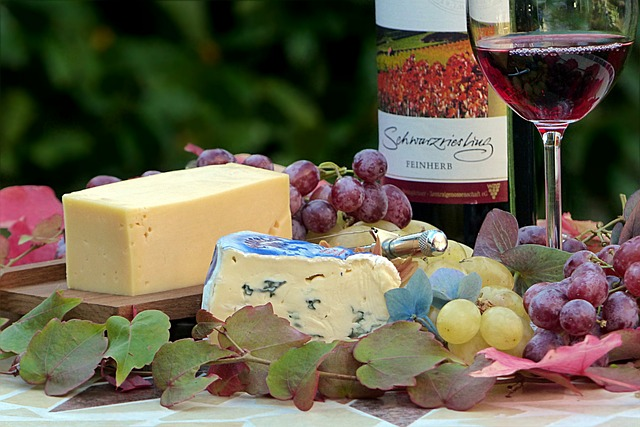
Acidity Balance
Imagine the fizz of sparkling wine as it dances on your tongue, cutting through the richness of a creamy cheese. Or consider the high acidity of a crisp Chablis, its citrus and pear notes acting as a perfect foil to the salty depth of a semi-hard cheese. It’s all about finding that refreshing taste, that harmonious balance where the acidity in wine provides a counterpoint to the cheese’s creaminess, enhancing the flavors and leading to a perfectly balanced tasting experience.
Take a German Riesling with its high acidity; it can beautifully offset the sharpness of a blue cheese, leaving a complementary impression on the palate.
Creating Perfect Pairings: Tips and Tricks
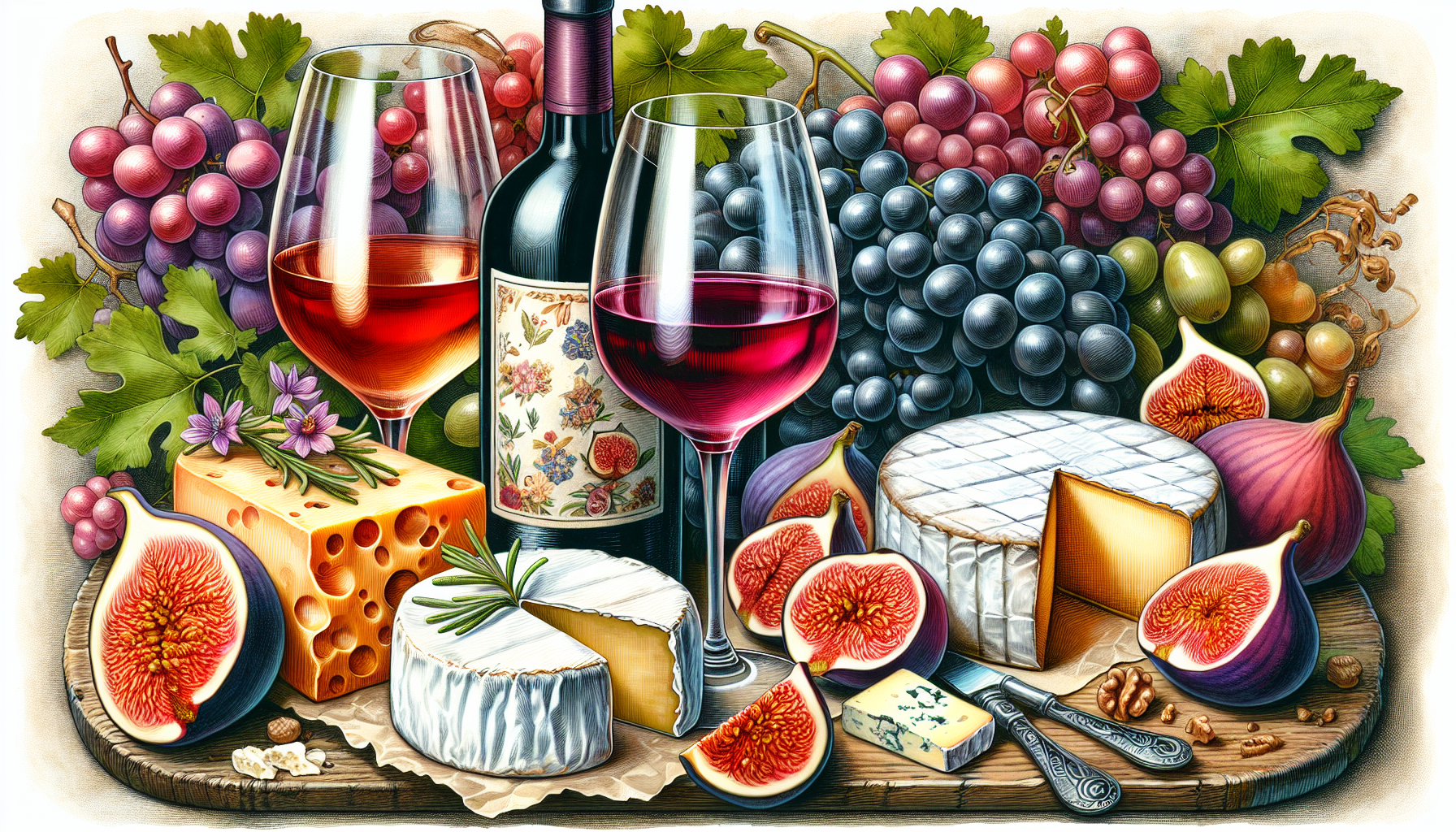
Embrace the art of experimentation, and let intuition be your guide to masterful wine and cheese pairings. Remember, the goal is to create a well-balanced experience where neither the wine nor the cheese overpowers the other. Whether you’re reaching for a firm, nutty cheese that pairs with virtually any wine or venturing into the vast world of soft, fresh cheeses, there’s a match for every taste. And while guidelines exist, don’t be afraid to play around; after all, discovering your perfect cheese and wine combination might be a sip and a nibble away.
Matching Intensity
The key to a harmonious balance lies in matching intensity. Like a great match, bold wines need aged cheeses to stand up to them. Think of a robust Cabernet Sauvignon and its need for an equally powerful aged cheese, such as sharp cheddar or nutty Gruyère.
On the other hand, lighter wines, those with an ABV below 12.5%, crave the company of milder cheeses—fresh mozzarella or delicate brie—which are ideal companions for crisp Pinot Grigio or gentle Pinot Noir.
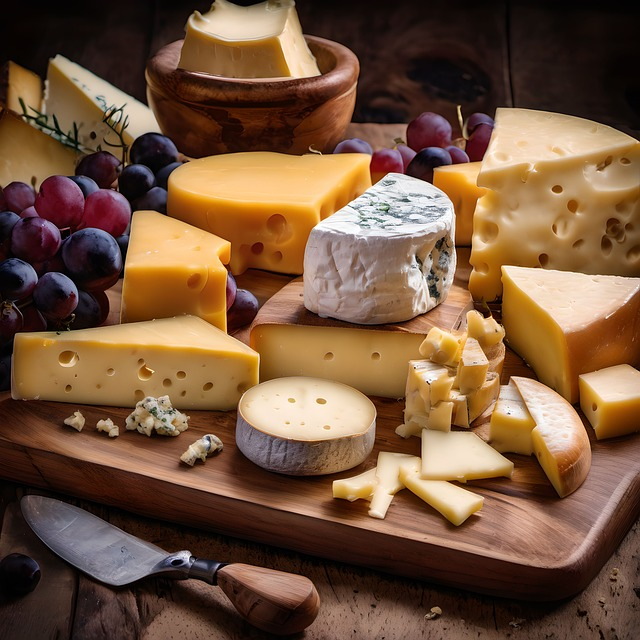
Playing with Texture
Texture plays a pivotal role in the tasting experience. It’s about creating a dynamic interplay, like the classic contrast between a creamy triple creme cheese and the lively effervescence of Champagne. Consider the rich, buttery flavor of brie paired with an oaky Chardonnay—it’s a creamy texture delight that coats the palate and is then sliced through by the wine’s crisp acidity.
The goal is to achieve a tasting experience that is as much about sensation as it is about flavor.
Regional Harmony
When it comes to wine and cheese, geography can be destiny. Wines and cheeses from the same region have a natural affinity for each other, and their flavors are shaped by the same soil and climate. This is the ‘what grows together, goes together’ philosophy in action.
Here are some perfect wine pairing and cheese combinations:
Creamy goat cheese from Pessac-Léognan alongside a White Bordeaux
 What exactly is a Bordeaux? Bordeaux ble... More
What exactly is a Bordeaux? Bordeaux ble... MoreA sharp cheddar with a bold Cabernet Sauvignon
A rich blue cheese with a sweet Port
A tangy feta with a crisp Sauvignon Blanc
Discover the art of pairing cheese and wine and elevate your next gathering with these delightful combinations.
Their creamy textures and fruity flavors, nutty notes singing in perfect harmony.
This principle doesn’t just apply to casual pairings; it’s also a secret weapon for special occasions. Imagine a Spanish Rioja with Manchego for your next anniversary — a regional pairing that’s as sophisticated as delicious.
Classic Wine and Cheese Pairings

Certain classic combinations immediately come to mind when you think of wine and cheese pairings. These pairings have stood the test of time, delighting connoisseurs and casual sippers alike with their seamless blend of flavors. From the nutty sweetness of aged Gouda along with a bold Zinfandel to the savory flavor and perfect balance of aged Cheddar with a tannic Cabernet Sauvignon, these pairings have become legendary.
Whether hosting a dinner party or simply indulging in a solo tasting, these tried-and-true combinations will surely impress.
Sauvignon Blanc and Goat Cheese
Sauvignon Blanc and goat cheese are the epitome of a classic combination, a pairing that feels as natural as it is delightful. The crisp, grassy notes of a Loire Valley Sauvignon Blanc mirror the subtle grassiness of goat cheese, creating a delicate dance of refreshing and satisfying flavors.
It’s a pairing that demonstrates the beauty of simplicity, where the light-bodied wine complements the cheese’s tanginess without overwhelming it, a true testament to the art of wine and cheese pairing.
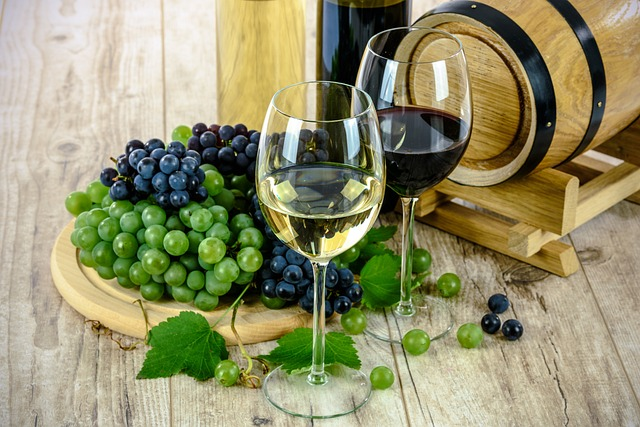
Cabernet Sauvignon and Aged Cheddar
Cabernet Sauvignon and aged cheddar cheese is a bold duo not for the faint of heart. This pairing is a revelation, where the rich tannins Tannins in Wine Tannins in wine are phen... More of the Cabernet cut through the dense, aged cheddar, creating a balance that’s both robust and refined.
Tannins in Wine Tannins in wine are phen... More of the Cabernet cut through the dense, aged cheddar, creating a balance that’s both robust and refined.
It’s a match that showcases the power of aged cheeses and bold wines to complement and enhance each other, making for an unforgettable tasting experience.
Fun fact: As cheese ages and loses water, its increased fat content makes it richer in flavor and counteracts the wine’s high tannins Tannins in Wine Tannins in wine are phen... More.
Tannins in Wine Tannins in wine are phen... More.
Pinot Noir and Camembert
Pinot Noir and Camembert is an elegant affair, where the soft, creamy texture of Camembert meets the silky smoothness of Pinot Noir. The earthy notes of the wine are a perfect match for the subtle flavors of the cheese, creating a pairing that’s as sophisticated as it is accessible.
This is an ideal choice for those who prefer red wines but crave the creamy indulgence of creamy cheeses and soft cheeses — a pairing that will turn an ordinary evening into a special occasion.
Adventurous Wine and Cheese Combinations
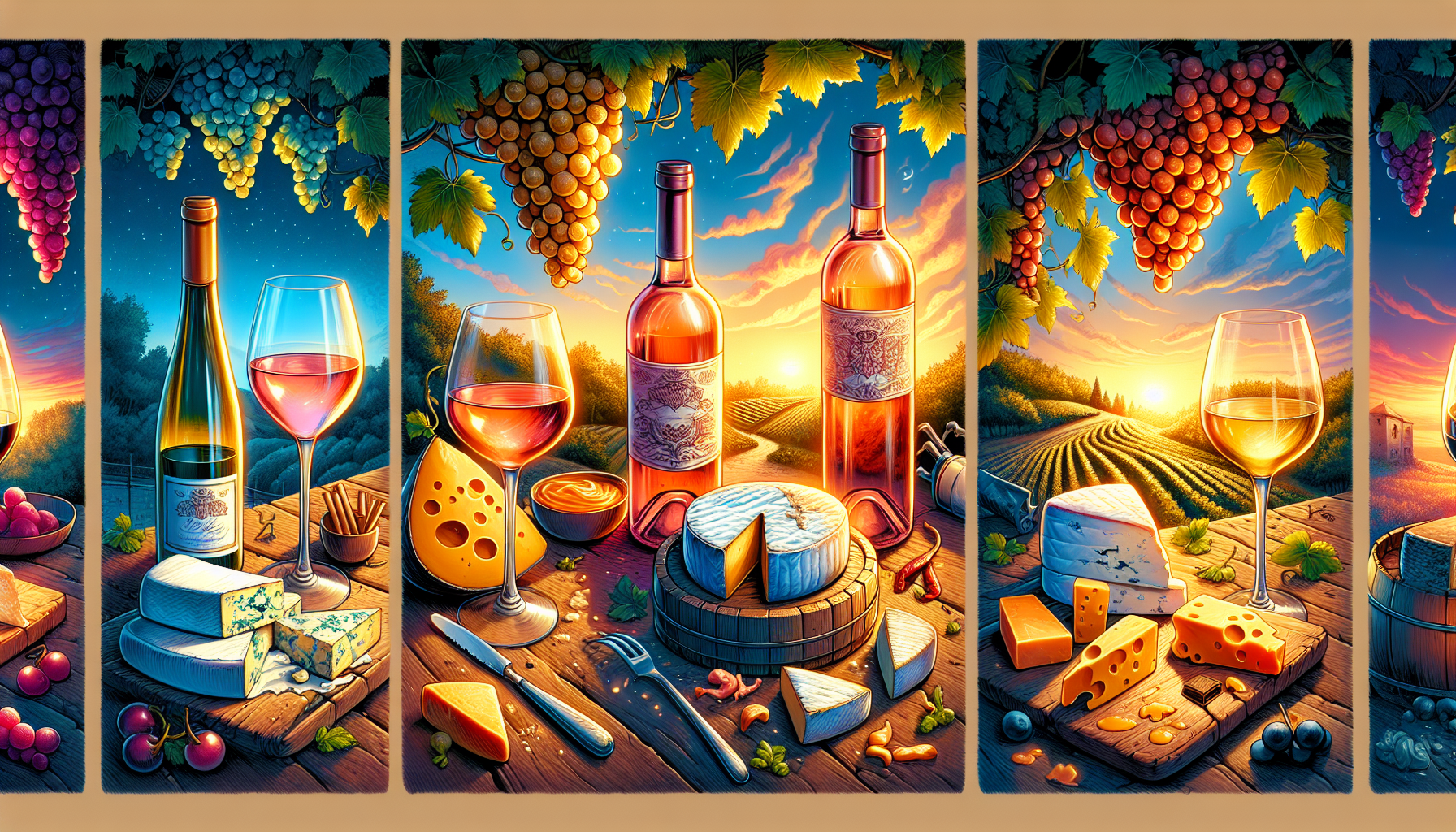
For those with a taste for adventure, stepping beyond the classic wine pairings can be a thrilling exploration of flavors. From the surprising sweetness of a late-harvest Riesling matched with the boldness of blue cheese to the alluring contrast of a fruity Rosé with salty feta, these pairings invite you to push the boundaries and discover new favorites.
And why not venture into the world of chocolate-infused cheeses paired with dessert wines for a truly indulgent experience? The world of wine and cheese is vast and varied, and there’s always something new to try.
Riesling and Blue Cheese
Riesling and blue cheese might seem counterintuitive at first glance, but they offer a delightful contrast. The sweetness of Riesling beautifully balances the saltiness and intensity of salty cheeses like blue cheese, creating a harmonious balance that can only be described as a dance between sweet and savory flavors.
It’s an adventurous choice that promises to challenge and delight the palate.
Rosé and Spicy Cheeses
The pairing of Rosé and spicy cheeses celebrates balance and contrast. With its balanced sweetness-acidity profile, the sweet, fruity notes of a Grenache Rosé make it an ideal companion for the heat of spicy cheeses like Habanero Cheddar. It’s a pairing that brings together the best of both worlds, creating a refreshing experience perfect for those who love a bit of spice in their life.
Dessert Wine and Chocolate Cheese
Indulge in the luxurious combination of dessert wine and chocolate cheese, a pairing that’s as decadent as it is unique. The rich, indulgent notes of a sweeter wine like late-harvest Riesling or ice wine are the perfect complement to the creamy sweetness of chocolate-infused cheese. It’s an ideal pairing for those moments when only the most indulgent treat will do, offering an opulent tasting experience.
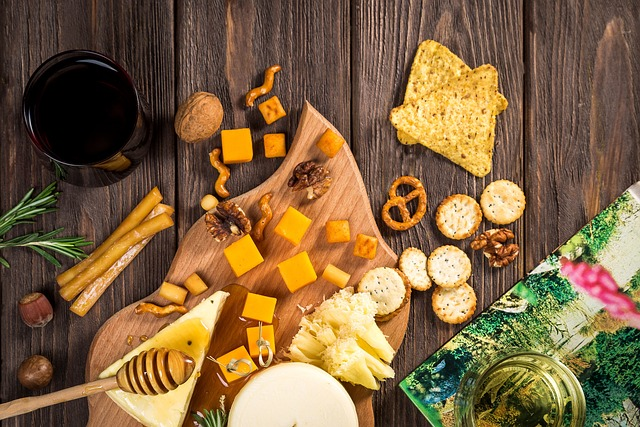
Hosting a Wine and Cheese Tasting Party
There’s something truly special about sharing the joy of wine and cheese with friends and family. Hosting a wine and cheese tasting party is not only a delightful social event but also a chance to showcase your newfound cheese and wine pairing, as well as your prowess. With a relaxed atmosphere and the right presentation, you can transform your gathering into an interactive and engaging experience that will be remembered long after the last sip and nibble.
From the variety of pairings to the choice of glassware, every detail contributes to the success of your event.
Variety is Key
At any tasting party, variety is the spice of life. Offering a range of wines, from light and crisp to full-bodied and tannic, alongside a selection of cheeses, from robust, aged varieties to delicate, fresh ones, ensures something for everyone. Encourage guests to mix and match, discovering new favorites as they explore the range of flavors on offer.
Remember to cater to those with dietary restrictions by providing alternatives like non-alcoholic wines or lactose-free cheeses.
Presentation Matters
They say we eat with our eyes first, and this is never truer than when it comes to presenting a wine and cheese platter. A visually appealing setup with a variety of cheese sizes and textures, complemented by garnishes like nuts and fresh fruits, can elevate the entire tasting experience.
Utilizing stone platters to keep the cheese cool and hardwood boards for a rustic touch adds to the visual feast, making every bite and sip even more enjoyable.
Proper Glassware
The right glassware can make all the difference in a wine-tasting experience. Here are some tips for choosing the right glassware for different types of wine:
Serve bold reds in large goblets to allow their flavors to open up.
White wines benefit from the elegance of long-stemmed glasses.
Sparkling wines should be served in tall, narrow flutes to preserve the bubbles.
Dessert wines are best enjoyed in small, tulip-shaped glasses to concentrate their aromas.
By choosing glassware that complements the wine, you’re not just serving a drink but creating an experience that enhances every nuance and note.
Pairing Wine and Cheese for Special Occasions
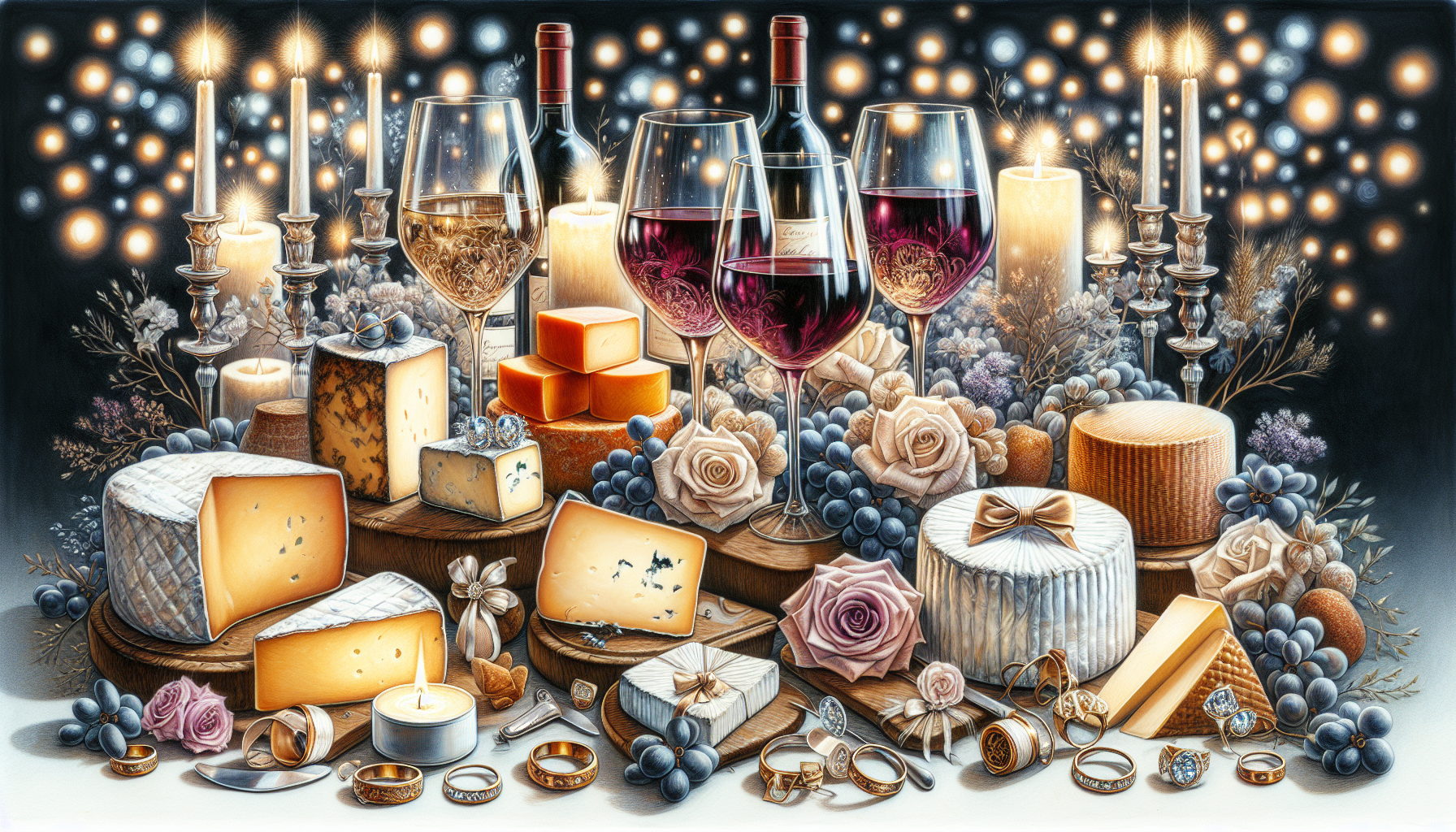
Special occasions call for extraordinary pairings, and the choice of cheese and wine pairing can set the tone for celebration and intimacy. Whether it’s the festive zest of the holidays or the tender moments of an anniversary, the right combination can elevate any event into a memorable affair.
Whether it’s the cozy comfort of a Merlot with Gouda for a romantic evening in or the sophisticated sparkle of Champagne with Camembert for toasting to another year, the perfect wine pairing is the one that complements the occasion as beautifully as it does the palate.
Festive Pairings
The festive season is a time for indulgence, and what better way to indulge than with a serious cheese lover and perfect wine and cheese pairing? Here are some delicious combinations to try:
Chianti with herbed Tuscan Fontal cheese
Beaujolais with tangy Feta
Zinfandel with Asiago
Port with blue cheese
These pairings will add a sophisticated touch to any holiday gathering.
These festive pairings are not just about taste but about creating moments of joy and celebration.
Anniversary Indulgences
Anniversaries are milestones that deserve a touch of luxury, and with wine and cheese, you can create an indulgence worthy of the occasion. A vintage Champagne or an aged Bordeaux What exactly is a Bordeaux? Bordeaux ble... More can convey a sense of refinement and celebration, especially when paired with exquisite cheeses like a creamy Brillat-Savarin or a rich Gruyère.
What exactly is a Bordeaux? Bordeaux ble... More can convey a sense of refinement and celebration, especially when paired with exquisite cheeses like a creamy Brillat-Savarin or a rich Gruyère.
With their effervescence and toasty notes, sparkling wines like Prosecco or Cava can also add a festive touch, making the anniversary all the more special.
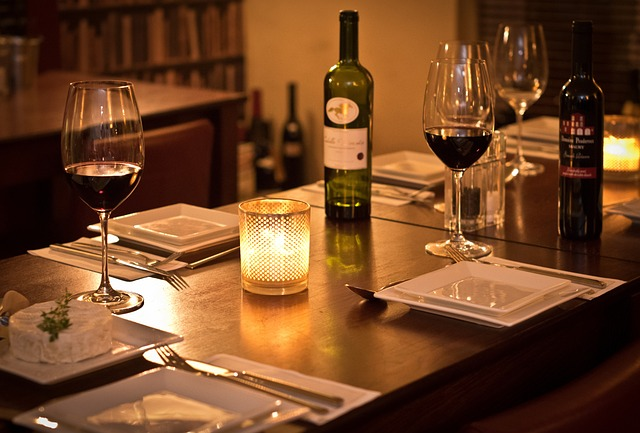
Romantic Nights In
For intimate evenings when the rest of the world fades away, the perfect wine and cheese pairing can be the centerpiece of a romantic night in. A crisp Provence Rosé can set a light and playful tone, especially when paired with a mild and buttery Havarti.
Alternatively, a smooth Merlot provides a cozy backdrop perfect for sharing with someone special. The key is selecting wines and cheeses that resonate with the evening’s mood, creating a harmonious atmosphere where love and flavor intertwine.
The Last Pour
As our journey through the art of wine and other cheese and wine pairings comes to a close, we hope you feel inspired to embark on your own tasting adventures. Whether adhering to the tried-and-true or defying convention, pairing wine and cheese is a personal and evolving experience. Embrace the classics, explore the unconventional, and remember that the best pairing is one that brings you joy. So uncork that bottle, slice into that artisan cheese yourself, and savor the beautiful symphony they create together.
Frequently Asked Questions
How do you set up a wine and cheese pairing?
Pair delicate cheeses with light wines and stronger, complex cheeses with robust selections to match their flavor intensity. Try a light white or red wine with delicate cheeses and an oaked white or a full-bodied red with stronger cheeses. Enjoy your wine and cheese pairing!
Can I pair a bold red wine with a soft cheese?
Yes, you can pair a bold red wine with a soft cheese as long as the cheese has enough flavor to complement the wine’s robust nature. Try it and see how you like it!
What if I don’t like the classic pairings?
Don’t be afraid to try unconventional cheese types and pairings, and trust your palate—discovering what you enjoy is part of the fun! Enjoy exploring the world of wine and cheese.
How do I choose the right wine for a cheese I love?
Consider the intensity and flavor profile of the wine that helps the cheese. Remember to pair light with light and bold with bold. You can also refer to a cheese pairing guide or ask a local sommelier for recommendations.
Is it important to serve wine and cheese at certain temperatures?
Yes, serving wine and cheese at certain temperatures is important to enhance their flavors. Cheese is best served at room temperature, red wine slightly cool, and white wine chilled.

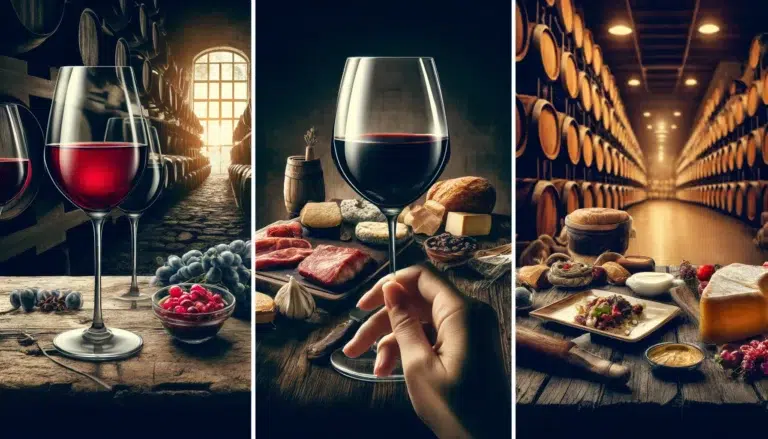

![Why Are Some Wines Described as Buttery? | [WSET4]](https://grapeandbarrel.com/wp-content/uploads/2024/04/01af0647-bfac-424a-bd94-f220d92fd621-768x439.png)

